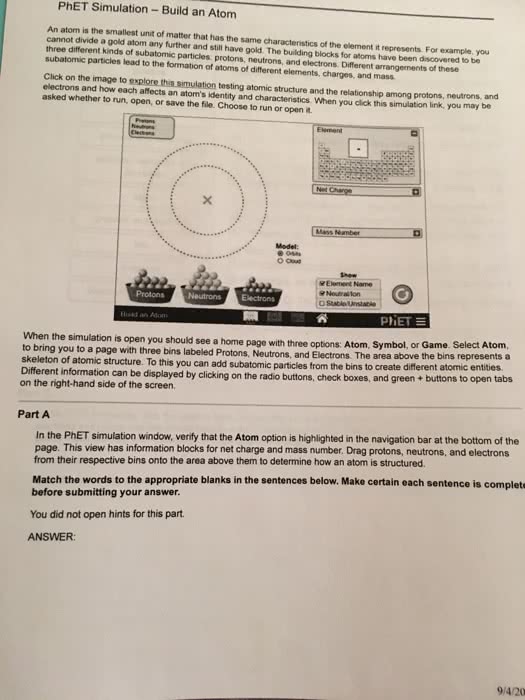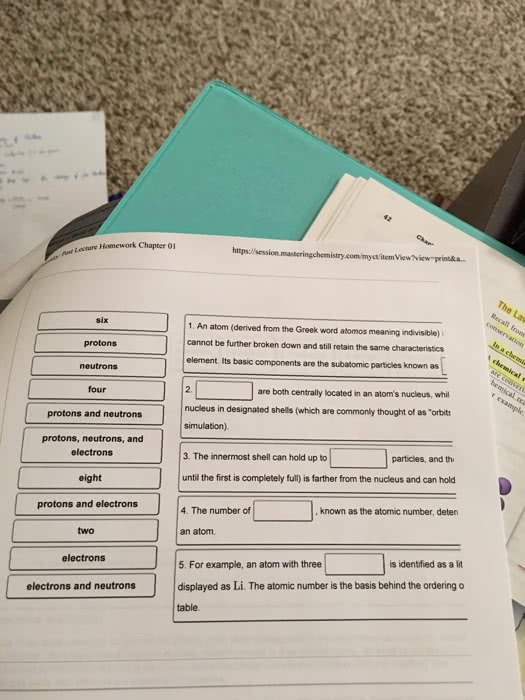CHEM 1101 Lecture Notes - Lecture 14: Polonium, Radium, Atomic Number
Document Summary
Get access


Related textbook solutions
Chemistry: Structure and Properties
Basic Chemistry
Principles of Chemistry Molecular Approach
Chemistry: Structure and Properties
Principles of Chemistry Molecular Approach
Chemistry: A Molecular Approach
Chemistry: A Molecular Approach
Principles of Chemistry: A Molecular Approach
Chemistry: The Central Science
Related Documents
Related Questions
I am doing the Atomic Mass of Metallo
You may have noticed on the periodic table that the atomic mass of an element is usually not a whole number. That happens because of isotopes. An atom that is missing a neutron or has an extra neutron is called an isotope. They are still the same element; however, they are just a little different from every other atom of the same element.
Most of the carbon atoms in the universe are Carbon-12, with 6 neutrons. A small percentage of carbon atoms are Carbon-13, with 7 neutrons, and an even smaller percentage are Carbon-14 and have 8 neutrons. Carbon-13 and Carbon-14 are isotopes of carbon.
Atomic mass is calculated by determining how many atoms of each isotope type are present in the universe. Since the isotopes of carbon make up only a small percentage of the carbon in the universe, the average of the masses of all carbon atoms is slightly higher than 12, so the atomic mass for carbon is actually 12.011.
Objective
Analyze the isotopes of âMetalloâ and to calculate its atomic mass
Materials
sample of metallo (bag of mixed nuts, bolts, and washers)
balance
Procedures
Obtain a sample of the new element âMetallo.â
Separate the three isotopes of Metallo (nuts, washers, bolts) and measure the mass of each isotope.
Count the numbers of each isotope.
Record all data in the table.
Data Table
| Nuts | Bolts | Washers | Totals | |
| Total Mass (g) | ||||
| Number | ||||
| Average Mass (g) | ||||
| Percent Abundance | ||||
| Relative Abundance | ||||
| Relative Mass |
Analysis
Calculate the average mass of each isotope by dividing the total mass by the number of particles of that isotope. Record your answers on the Data Table.
Calculate the percent abundance of each isotope by dividing its number of particles by the total number of particles and multiplying by 100. Record your answers on the Data Table.
Calculate the relative abundance of each isotope by dividing the percent abundance from Step 2 by 100. Record your answers on the Data Table.
Calculate the relative mass of each isotope by multiplying its relative abundance from Step 3 by its average mass. Record your answers on the Data Table.
Calculate the average mass of all Metallo particles by adding the relative masses. This average mass is the atomic mass of Metallo.
Explain the difference between percent abundance and relative abundance. What is the result when you total the individual percent abundances? The individual relative abundances?
The percent abundance of each isotope tells you how many of each kind of isotope exist in every 100 particles. What does relative abundance tell you?
Compare the total values for Rows 3 and 6 in the Data Table. Explain why the totals differ and why the value in Row 6 best represents the atomic mass.

